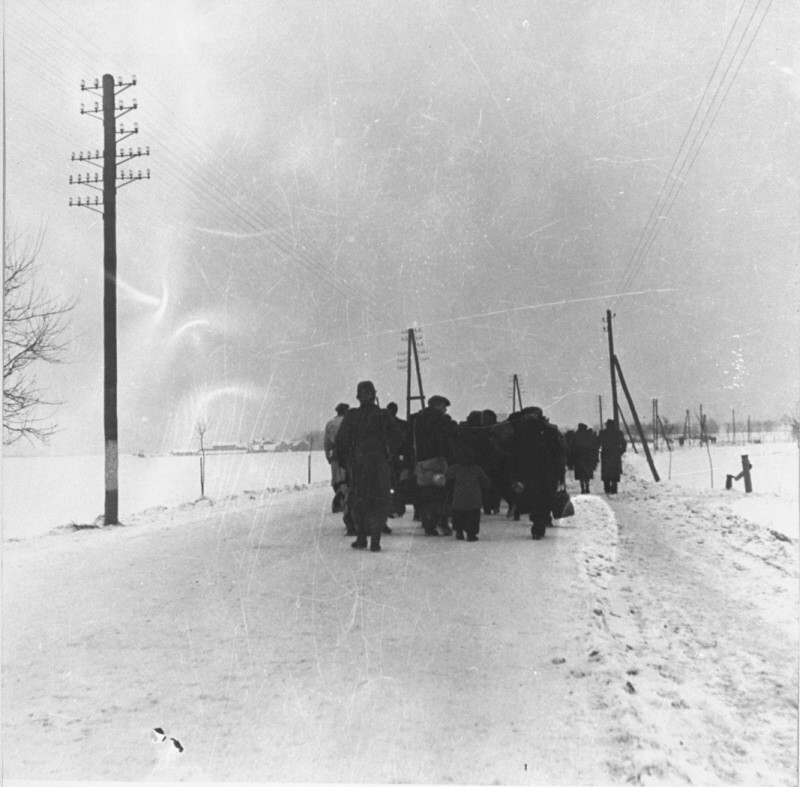
Film
Browse an alphabetical list of film clips that feature important events before, during, and after the Holocaust and World War II. These clips include home movies, propaganda films, newsreels, and more.
<< Previous | Displaying results 1-10 of 15 for "Film" | Next >>
-
Dachau after liberation
FilmThe Dachau concentration camp, northwest of Munich, Germany, was the first regular concentration camp the Nazis established in 1933. About twelve years later, on April 29, 1945, US armed forces liberated the camp. There were about 30,000 starving prisoners in the camp at that time. The film seen here was edited from original footage shot by Allied cameramen as liberating troops entered Dachau. It was discovered in the archives of the Imperial War Museum in 1984 and was never completed.
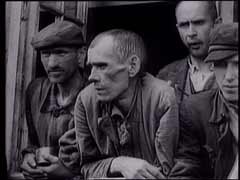
-
Daily life in the Warsaw ghetto
FilmA bridge connected areas of the Warsaw ghetto to prevent Jews from entering the streets that were not part of the ghetto. Before the ghetto was sealed, the few entrances and exits had checkpoints. In the early months of the ghetto, life had the appearance of normalcy, but very soon the lack of food and adequate housing began to take its toll.
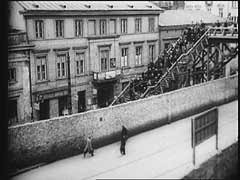
-
D-Day
FilmMassive Allied landings of air- and sea-borne forces on five Normandy beaches (codenamed Utah, Omaha, Gold, Juno, and Sword) began on June 6, 1944 (D-Day). The purpose of the invasion was to establish a bridgehead from which Allied forces could break out and liberate France. By the end of the operation's first day, some 150,000 troops were ashore in Normandy. This footage shows Allied forces landing on the Normandy beaches.
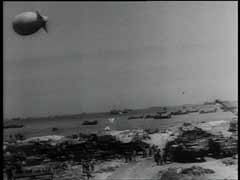
-
D-Day bombings over France
FilmAllied air superiority over Germany was a decisive factor in the success of the D-Day (June 6, 1944) landings in France. This footage shows the Allied bombing of suspected German positions during the battle. Allied air attacks both supported Allied ground operations in Normandy and prevented German reinforcements from reaching the area. The Allies would liberate most of France by the end of August 1944.
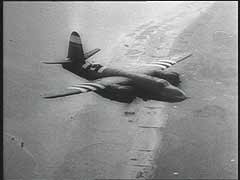
-
Defeat of Belgium
FilmGerman forces invaded western Europe in May 1940. As part of their strategy to defeat Britain and France, German forces invaded neutral Belgium. Little more than two weeks after the German invasion of Belgium, King Leopold III ordered the surrender of the Belgian army. In this footage a Belgian officer signs the surrender and thousands of refugees flood the streets as German forces move through Belgium.
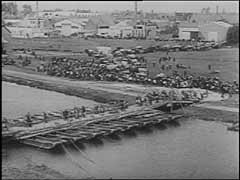
-
Defendant Hans Frank testifies
FilmDefendant Hans Frank gives testimony to his defense lawyer during the Nuremberg trial about his leadership roles during the Third Reich.
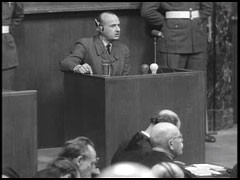
-
Defendant Hermann Göring listens to trial testimony
FilmDefendant Hermann Göring, seated at left in the dock, listens as US Chief Prosecutor Robert Jackson interrogates witness Albert Kesselring about the Luftwaffe (German Air Force).
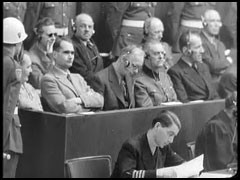
-
Defendant Julius Streicher
FilmDefendant Julius Streicher is sworn in as a witness during the International Military Tribunal at Nuremberg.
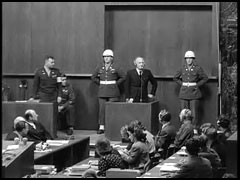
-
Defendants enter pleas at Nuremberg Trial
FilmAfter the defeat of Germany, the Allies tried leading state and party officials and military commanders of the Third Reich before a tribunal of military judges from the Soviet Union, Great Britain, France, and the United States. This International Military Tribunal tried 22 major war criminals during what is commonly known as the Nuremberg Trial, which lasted from November 1945 to October 1946. This footage shows the accused entering pleas following their indictment on charges of crimes against peace, war…
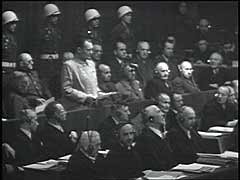
-
Defendants in the dock
FilmThe International Military Tribunal defendants in the dock at Nuremberg.
